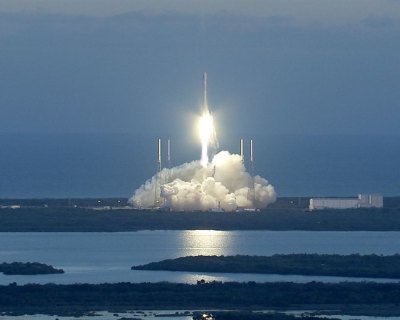5 things to know: The space weather mission

Here’s what you need to know:
-
The satellite will help scientists predict geomagnetic storm magnitude. The term geomagnetic storm is a mouthful, but here is what it means: “a major disturbance of Earth's magnetosphere that occurs when there is a very efficient exchange of energy from the solar wind into the space environment surrounding Earth," according to the National Oceanic and Atmospheric Administration (NOAA). These eruptions can make our lives miserable here on Earth, causing problems with power grids, aviation, telecommunications and even global positioning systems.
-
We'll have a new warning system: The Advanced Composition Explorer (ACE), launched in 1997, observes an array of particles that flow toward Earth from the sun, according to NASA. The newly launched DSCOVR will join ACE and replace it as America’s primary warning system for solar magnetic storms.
-
We'll get forecasts ... and great pics: The new satellite will “provide NOAA space weather forecasters more reliable measurements of solar wind conditions,” NASA reports, “improving their ability to monitor potentially harmful solar activity.” That's enough, but we'll get cool pictures too. The satellite comes equipped with the Earth Polychromatic Imaging Camera (EPIC) that will send back images of our planet.
-
The satellite will be far out, literally: The satellite is headed to an orbit 1 million miles from Earth, according to NASA. It will orbit between Earth and the sun at a place called the first Lagrange point. NASA defines the Lagrange point as a location in space where objects tend to stay put. It is named for the French-Italian mathematician Joseph-Louis Lagrange (1736-1813). It’s like this: A spacecraft launched from Earth moves outward unless pulled by the gravity of a star or planet. But Lagrange theorized that “the gravity of two bodies, combined with the third body's centripetal force,” would keep an object fixed. As it turns out, he was correct.
-
Who are the players? DSCOVR is a partnership between NOAA, NASA and the U.S. Air Force. Approximately 150 days after launch, the satellite will be activated and checked out. Afterward, NASA will hand over operations to NOAA.
This report was compiled with information from NASA and the National Oceanic and Atmospheric Administration.
Related:

